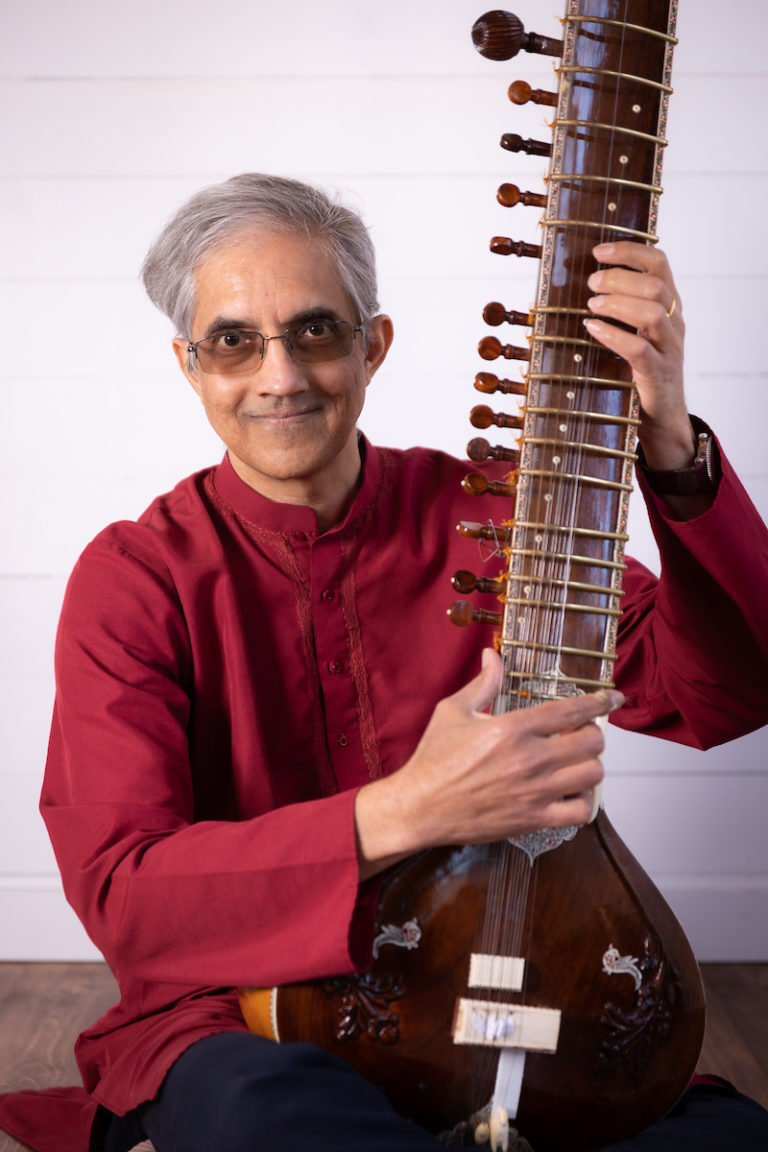Vishwanath N. Shenoy is a sitar player living in Clinton, Mississippi. He was born in India, and in 1988 he moved to Ohio to study to become a physician. In his professional life, Shenoy is an MD FACP Internist and Gastroenterologist, and in 2004, Shenoy moved to Mississippi for a job in this field. While working full time as a doctor, he did not have much interest in learning to play the sitar until he heard his future teacher, Hiranmay Goswami playing at a party about 16 years ago. Shenoy was mesmerized and knew he wanted to learn. He had had experience playing the guitar, harmonica, bansuri (bamboo flute), Djembe and Udu drum, but the sitar is a particularly challenging instrument. For this reason, Goswami was initially hesitant to take on Shenoy as a student, but Vish promised his teacher that he was dedicated to learning, and would practice consistently. At the time, however, Vish was working 60 to 80 hours per week and struggled to practice and meet Goswami approximately twice a month for lessons.
In 2018, Shenoy was unfortunately diagnosed with a brain tumor, which forced him to put his medical career on hold. Time away from his job allowed him more time to practice the sitar and fully commit himself to advancing his skills. As Shenoy explains, “The professional sitarists, they dedicate their entire life. They start at a very young age, maybe 7 or 8 years old, with their teacher, and they practice anywhere from 4 to 10 hours a day for 20 to 30 years.” Shenoy practices between one to two hours per day and has continued to take lessons with his teacher.
The sitar is an instrument of Indian classical music, which is based on ragas. The word raga means “coloring of the mind” and each raga has a distinct scale and an ascending and descending movement. Specific ragas are meant to evoke emotions like romance, humor, sadness, excitement, bravery, fear, disgust, amazement and peace. Each raga consists of 10% composition, and 90% improvisation. When Hiranmay would teach Shenoy a specific raga, he would not only learn the composition and structure, but all the different ways he could improvise in the piece. Learning the composition and improvisational elements of one raga can take up to six months to learn.
Students of the sitar can rate their progression and skill by how much they are able to improvise. It is one of the most challenging aspects of playing Indian classical music, and Shenoy has noticed an improvement in his ability to improvise. But it is not just the music itself that is challenging. Shenoy has found that the physical aspects are also difficult, like building up callouses and strength in the hands and sitting in lotus position for long periods of time. Also, sitars are very expensive, and few people in the United States know how to repair them. But through all of this Shenoy continues to practice and play every chance he gets. He has performed in India, New Orleans, Birmingham, and he is one of the few sitarists, along with Hiranmay Goswami, who perform in Mississippi.

